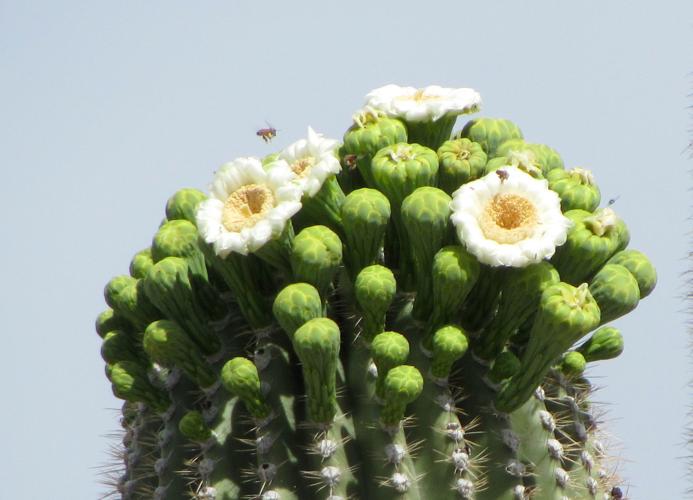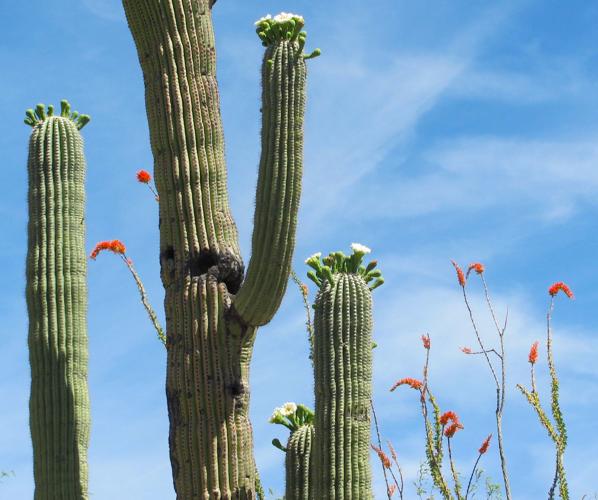Annual wildflowers have bloomed and gone, palo verde trees have peaked with yellow blossoms — and now blooming cacti are taking center stage.
Prickly pears, chollas and saguaros are bringing brilliant hues of yellow, red and white to deserts around Tucson this week. The cactus color show typically is more dependable than that of annual wildflowers, which require well-spaced autumn and winter rains to produce a good bloom.
Cacti “store water and they’re adapted to go dormant in droughts. They can preserve enough water to bloom,” said Mark Fleming, curator of botany at the Arizona-Sonora Desert Museum west of Tucson.
“In a good year, they might have multiple bloom cycles,” Fleming said. “But they almost always have enough water to do one cycle.”
The blooming season for most cacti “will be winding down in June and July and recharging with the summer monsoon,” he said. “We could see a second cycle of blooms in the fall if there is a good monsoon.”
ABOUT THE BLOOMS
- Prickly pears, a type of cactus easily identifiable by their paddle-shaped pads, produce mostly yellow flowers in the Tucson area. They are typically bright yellow on the first day of their bloom, fading to a sort of peach color on the second day. A few prickly pears produce blooms of other colors.
- Cholla cacti of several species grow in the Tucson area and produce blooms ranging from yellow and orange to red, purple and pink.
- Saguaros have dramatic creamy-white flowers. The blossoms of saguaros open at night and close the following midday or afternoon. Although individual flowers last only a day, a single saguaro can produce blooms for weeks.
- Hedgehog cacti typically bloom earlier in April with vibrant magenta flowers.
- Pincushions are very small cacti that produce showy pink flowers within about five days of a soaking summer rain.
- Barrel cacti are among the late bloomers of the cactus world. They usually show their yellow to red flowers in July and August.
WHERE TO SEE them
You’re apt to see them almost anywhere throughout the Tucson area, including urban and foothills neighborhoods.
To see a variety of blooms, you might try some of these sites:
- Saguaro National Park with units east and west of Tucson.
- Tucson Mountain Park west of the city.
- Ironwood Forest National Monument northwest of Tucson.
- Pima and Finger Rock canyons north of town.









